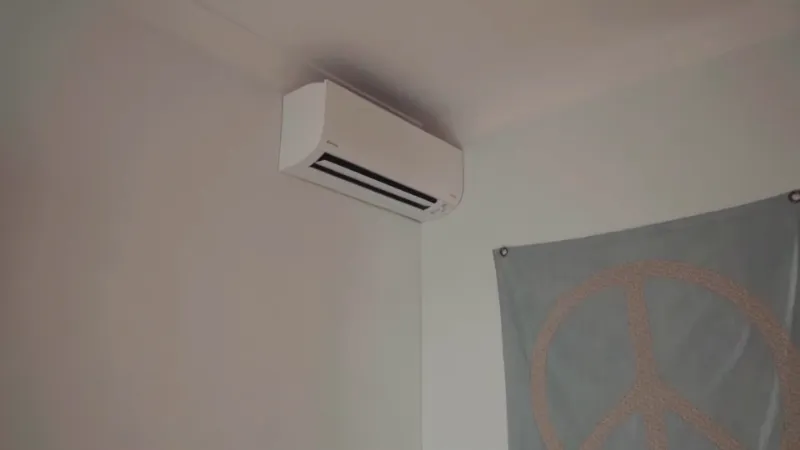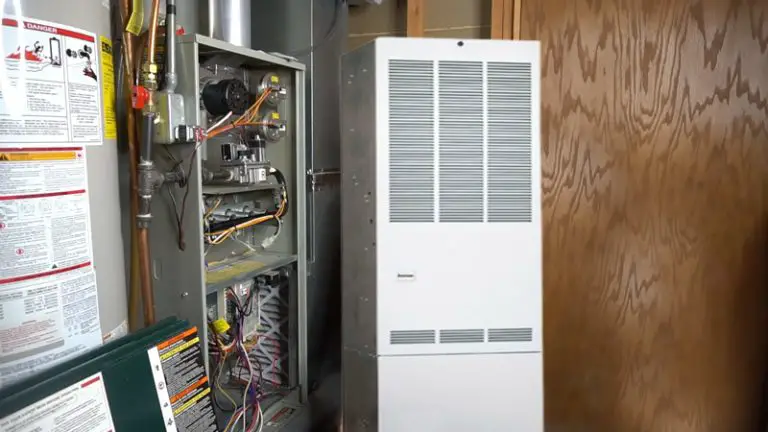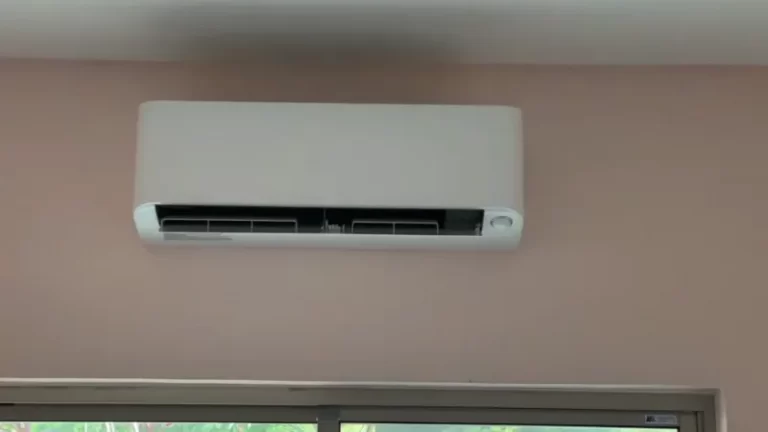How To Turn Off Wifi On Air Conditioner?

Air conditioners are a great way to keep your home comfortable during hot weather. But what happens when the air conditioner is using up too much of your home’s Wi-Fi signal? If you’re looking to turn off the Wi-Fi signal coming from your air conditioner, there are a few simple steps you can take to do just that.
In this guide, we’ll explain how to turn off Wi-Fi on your air conditioner so you can conserve your home’s bandwidth and keep your air conditioner running smoothly.
You'll Learn About
How to Turn Off Wifi on Air Conditioner?
Wifi on air conditioners is a feature that has become increasingly popular in recent years. It allows you to control the temperature and settings on your air conditioner remotely through your smartphone or computer.
However, if you want to turn off Wifi on your air conditioner, it’s important to know how to do it properly. This article will explain how to turn off Wifi on your air conditioner in just a few simple steps.
Check the Air Conditioner Manual
The first step in turning off Wifi on your air conditioner is to check the manual that came with your unit. Each air conditioner model is slightly different, so the instructions for turning off Wifi may vary.
The manual should explain how to turn off Wifi on your particular model.
Find the Wifi Settings
Once you have consulted the manual, the next step is to locate the Wifi settings on your air conditioner. Depending on the model, the Wifi settings may be located in the main menu, or it may be in a different menu altogether.
Once you have located the Wifi settings, you will be able to turn it off.
Disconnect From the Network
When you are ready to turn off Wifi on your air conditioner, you will need to disconnect from the network. This can be done by either turning off the Wifi network or by pressing the “Disconnect” button.
Be sure to double-check that your air conditioner is no longer connected to the network before continuing.
Disable the Wifi Feature
The final step in turning off Wifi on your air conditioner is to disable the feature itself. This can usually be done by pressing the “Disable” button in the Wifi settings menu. Once this is done, your air conditioner should no longer be able to connect to any Wifi networks.
Turning off Wifi on your air conditioner is a simple process that requires only a few steps. Just be sure to consult your manual and follow the instructions carefully so that you can ensure that your air conditioner is no longer connected to any Wifi networks.
Will a Wi-fi Air Conditioner Work Without Wi-fi?
A Wi-Fi air conditioner is a type of air conditioner that connects to the internet and can be controlled remotely. This makes it easy to adjust the temperature from anywhere. But what happens if the Wi-Fi connection is lost? Can a Wi-Fi air conditioner still work without Wi-Fi?
How Does a Wi-fi Air Conditioner Work
A Wi-Fi air conditioner is equipped with a built-in Wi-Fi chip. This chip allows it to connect to your home’s Wi-Fi network. Once connected, you can use a mobile app or web interface to control the temperature remotely.
You can set schedules, adjust the temperature, and even turn the air conditioner off and on.
Do You Need Wi-fi to Run a Wi-fi Air Conditioner
The short answer is no. A Wi-Fi air conditioner will still work without Wi-Fi. However, you won’t be able to control it remotely. You’ll have to adjust the temperature manually on the thermostat. Depending on the model, you may still be able to set up a basic schedule for turning the air conditioner on and off.
What Are the Benefits of a Wi-fi Air Conditioner
A Wi-Fi air conditioner offers many advantages over traditional models. For starters, it’s much easier to control the temperature remotely. You can also create schedules so that your air conditioner turns on and off automatically, saving you money on your energy bills.
Additionally, some models allow you to monitor your energy usage, so you can make adjustments to save even more money.
A Wi-Fi air conditioner can still work without Wi-Fi, but you won’t be able to control it remotely. You’ll have to manually adjust the temperature on the thermostat. That being said, the benefits of a Wi-Fi air conditioner still outweigh the drawbacks.
It’s much easier to control the temperature remotely, and you can also create schedules to save money on your energy bills.
What Button Turns on Wifi?
Many laptops have a dedicated button or shortcut key to turn on WiFi. This button is usually labeled with a wireless icon, such as an antenna or an airplane. It is usually located on the keyboard, near the F keys, along with other shortcut keys.
It may be located on the side of the laptop, such as on the left or right side of the function keys. On some laptops, it may also be located on the touchpad. This button may also have an orange LED which will light up when WiFi is enabled.
Some laptops may have a switch on the side which can be used to enable or disable WiFi. Other laptops may require that you press and hold the function key (Fn) and press a specific F key at the same time to enable WiFi.
Some laptops may also have a dedicated button for WiFi which can be found in the upper left or right corner of the keyboard. Consult your laptop’s user manual for more information about how to enable WiFi on your specific model.
What Does Wifi Mean on Air Conditioner?
WiFi stands for Wireless Fidelity, and it refers to a type of connection that allows for wireless communication. WiFi-connected air conditioners are AC units that can be connected to the internet via a WiFi connection.
These air conditioners can be controlled from a smartphone, tablet or laptop. The user can monitor and adjust the temperature, humidity, and other settings from anywhere. WiFi-connected air conditioners are more energy efficient than traditional models.
They provide convenience and cost savings in the long run. Smart air conditioners can be integrated with smart home systems. This allows users to control their air conditioners remotely. WiFi-connected air conditioners can provide optimal comfort and convenience.
They are also more energy-efficient than traditional models, helping to reduce energy costs.
How Do I Turn Off Wi-fi on Gree Air Conditioner?
To turn off Wi-Fi on a Gree air conditioner, press and hold the “WIFI” button for 10 seconds. The unit will beep twice and the WIFI icon will appear on the display. Release the button when the WIFI icon is displayed.
This indicates that the Wi-Fi mode has been activated. To turn off Wi-Fi, press and hold the “WIFI” button again for 10 seconds. The unit will beep twice and the WIFI icon will disappear from the display.
This indicates that Wi-Fi mode has been deactivated. Repeat the process if necessary to ensure Wi-Fi is turned off. Make sure the Gree air conditioner is powered on before attempting to turn off Wi-Fi.
Always remember to press and hold the “WIFI” button for 10 seconds to turn off Wi-Fi on a Gree air conditioner.
Can You Turn Off Wi-fi to Certain Devices?
What is Wi-fi
Wi-Fi is a wireless communication technology that enables devices to connect to the Internet and each other. It is the most convenient way to access the Internet, as no cables or wires are required.
How to Turn Off Wi-fi to Certain Devices
Most modern routers allow you to easily turn off Wi-Fi to certain devices. This is done by creating a list of devices that are allowed to connect to your Wi-Fi network and then blocking access to any devices not on that list.
To do this, you need to log into your router’s interface and find the “Access Control” or “Device Management” section. Once there, you can add the device’s MAC address (the unique identifier for each device) to the list of allowed devices.
Benefits of Turning Off Wi-fi to Certain Devices
By turning off Wi-Fi to certain devices, you can ensure that your network is more secure and that there won’t be any unauthorized access to your Wi-Fi. Additionally, you can also save money on your internet bill by limiting the devices that have access to your Wi-Fi.
This is especially useful if you have a lot of guests who use your Wi-Fi but don’t pay for it.
Drawbacks of Turning Off Wi-fi to Certain Devices
One of the biggest drawbacks of turning off Wi-Fi to certain devices is that it can be time-consuming and tedious. You have to manually add each device’s MAC address to the list of allowed devices, which can take a while, especially if you have a lot of devices.
Additionally, if you forget to add a device’s MAC address to the list, it won’t be able to access the internet.
Alternatives to Turning Off Wi-fi to Certain Devices
If you want an easier way to control which devices can access your Wi-Fi, you can use a third-party app such as WiFi Blocker. This app allows you to easily block any individual or group of devices from using your internet connection and also provides you with other features such as seeing who’s online, grouping devices into profiles for easy control, and finding your Wi-Fi passwords.
Can You Block Wi-fi Signal?
Wi-Fi signals can be blocked by placing metal objects in between the router and the device. Metal objects, such as doors, walls, furniture, and metal blinds, can interfere with the signal. The thicker the metal, the more likely it is to block the signal.
Placing the router in an open space can help boost the signal. Wi-Fi signals can also be blocked by other electronic devices. Using a Wi-Fi extender can help to improve the signal. Walls, floors, and ceilings can also reduce or block the signal.
Shielded cable can help to block the signal from escaping a room. Radio frequency absorbers can also be used to reduce the signal strength. Placing the router in an elevated position can also help to reduce interference.
To Recap
Disabling the Wi-Fi feature on your air conditioner can be helpful if you’re experiencing connectivity issues or simply want to conserve energy. Most modern AC units with smart features allow you to turn off Wi-Fi through the settings menu on the unit itself or via the companion app. This can also be useful if you’re troubleshooting the system and want to eliminate potential interference.
While you’re managing your AC’s settings, it’s worth checking other aspects of your HVAC system. For instance, if your furnace runs for 30 minutes and then shuts off, it could indicate an underlying issue that needs attention. Similarly, understanding the difference between LRA and RLA can help you better maintain your cooling system.




